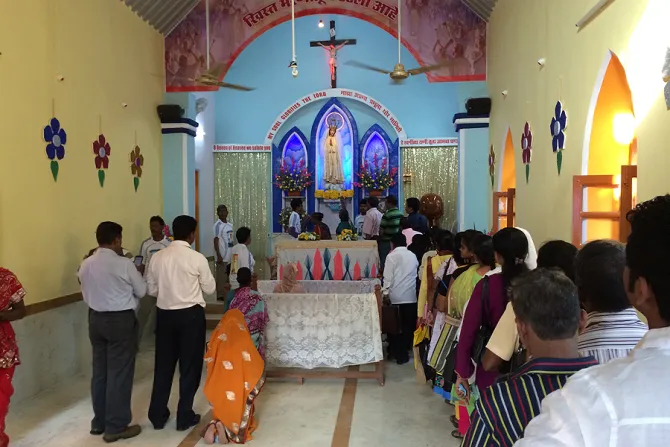Mumbai, India, Nov 7, 2014 / 00:03 am
A parish and shrine dedicated to Our Lady of Fatima in the Archdiocese of Bombay draws thousands of pilgrims regularly, and serves the scheduled tribes who live in Raigad district of India, outside of Mumbai.
"The Shrine of Our Lady of Fatima – Karjat stands as a beacon of unity and peace, where springs a spiritual oasis through Holy Mass, Eucharistic Adoration, novenas, and the rosary," Fr. Calistus Fernandes, rector of the shrine, told CNA Nov. 5.
The shrine is located in the city of Karjat, located nearly 40 miles southeast of Mumbai in Maharashtra state. It's district is home to several scheduled tribes – historically disadvantage peoples in India, like the scheduled castes, or dalits – including the Katkari, Mahadev, Koli, and Thakur.
It now largely serves the Katkari, a vulnerable, nomadic tribal group. The parish has 45 indigenous families, and has social development programs and capacity building, focused on education in partnership with religious congregations in the area.
Fr. Fernandes underlined that indigenization and inculturation of liturgy, and the message of Fatima communicated in vernacular languages, has "fostered participation and faith building."
"Our Lady of Fatima Church at Karjat was the first to be named and dedicated to Our Lady of Fatima, not only in India, but in all of Asia," Fr. Fernandes said.
It is home to a statue of the apparition which was brought from Portugal in 1920, even before it was granted formal recognition by the Holy See in 1930.
The statue was first venerated at the Railways Station Masters office, but in 1935 a small church was built to house it.
The shrine concluded its 79th annual pilgrimage Oct. 19, the Sunday following Our Lady of Fatima's feast, focusing on "Mary, Woman of the Eucharist."
The theme resonated with the Bombay archdiocese's year of the Eucharist, which commemorates the 50th anniversary of a Eucharistic congress which was attended by Bl. Paul VI.
Explaining the importance of the theme, Fr. Fernandes said Mary's pondering on the message of St. Gabriel was a "pondering on the Eucharist" that enabled her to become the first tabernacle.
"Secondly, Mary lived the Eucharist and she shared the Eucharist," Fr. Fernandes added. "So after our celebration of Mass … we have to live and share the Eucharist."
Despite the shrine's relative remoteness, people flock in large numbers to venerate and honor Our Lady of Fatima, which raises queries among locals of other religions: "Why and what attracts people to this small shrine, with miracles and votive thanksgiving?"
"This creates an opportunity for interreligious dialogue," Fr. Fernandes said, "and clearing ideas of relativism, or falling into traps of syncretism and false propaganda."
In Maharashtra, 82 percent of the population is Hindu, and 13 percent is Muslim. Catholics in the Archdiocese of Bombay are less than three percent of the total population.
The parish is gearing up for the upcoming centenary celebrations of the Fatima apparition, which will occur in 2017.
With the influx of pilgrim visits and the number of graces received, the Bombay archdiocese is considering raising the parish's status to that of archdiocesan shrine.


